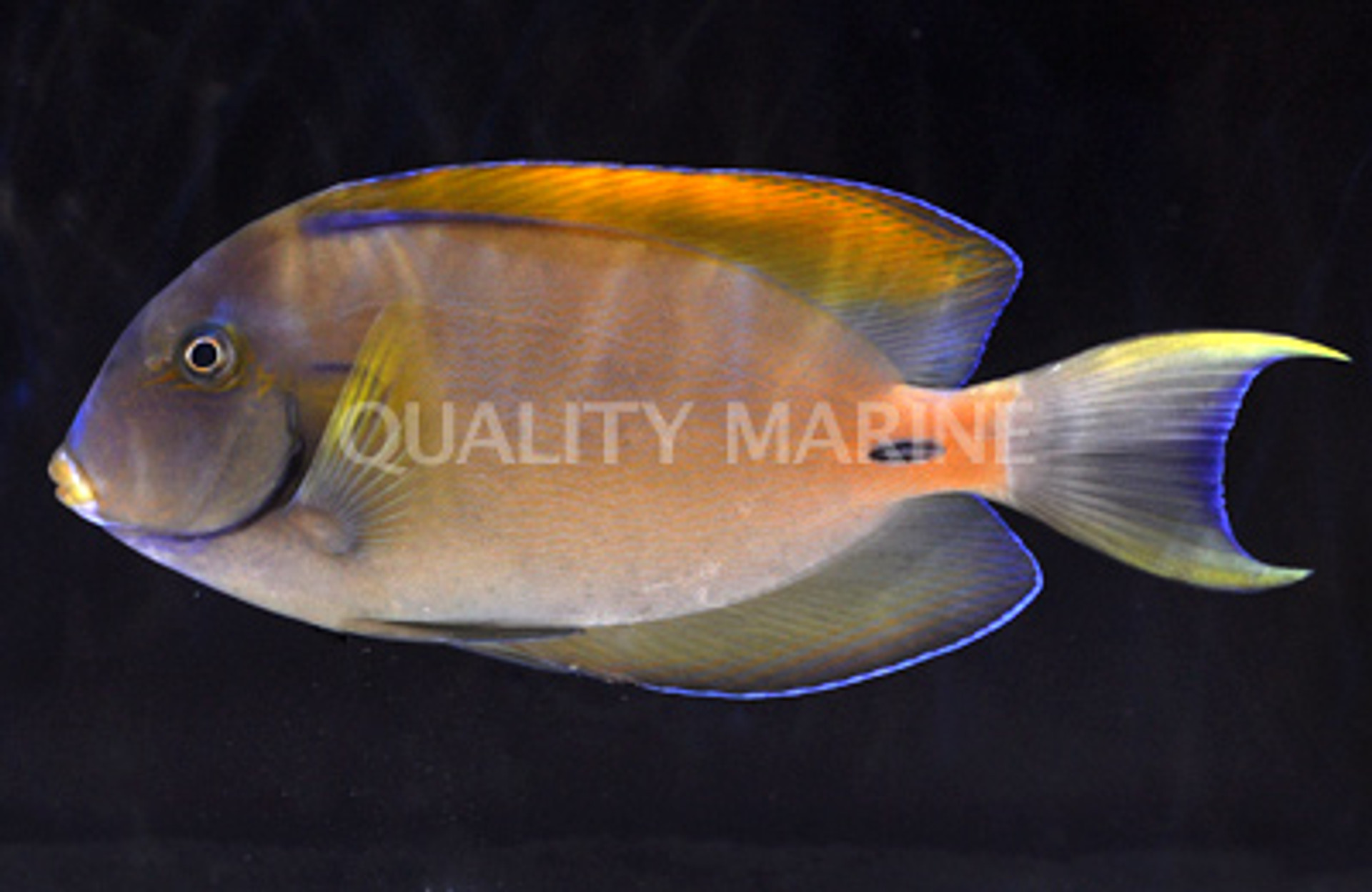Fowlers Surgeonfish (Acanthurus fowleri)

Surgeonfishes tend to be widespread in the Indo-Pacific. Think of the Clown Tang (A. lineatus), found from Africa to Hawaii, or the Yellowfin Surgeonfish (A. xanthopterus), which ranges further still, all the way to the Pacific coastline of the Americas. There are others with a more restricted range in just one of the ocean basins, like the Powder Blue Tang (A. leucosternon) in the Indian Ocean or the Achilles Tang (A. achilles) in the Central Pacific. But one of the narrowest distributions is found with Fowlers Surgeonfish, a distinctive species easily recognized by its peculiar horseshoe-like marking.
Acanthurus fowleri is named after the prominent early 20th century zoologist Henry Reed Fowler, who had collected the first specimens from the Philippines, but misidentified them as the Mimic Tang (A. pyroferus). The species has since been reported from as far west as Bali and in the east to the Solomon Islands, delimiting a fairly typical endemism within the Coral Triangle. This sort of distributional pattern can be seen in a number of reef fishes, typically from families that have a short-lived larval stage which serves to limit their dispersal ability. But acanthurids are well-known for having a lengthy larval stage. This is partly why captively bred surgeonfishes have proven so difficult to produce.
How the do we reconcile this with the narrow range of A. fowleri? Theres clearly much left to learn about the origins of this enigmatic species.
Despite having a distribution spanning the geographic epicenter of aquarium collecting, specimens are few and far between, making it one of the most consistently in-demand of the larger-bodied Acanthurus. Unlike others in this genus, A. fowleri does not usually occur in groups, tending instead to be found in low abundance as solitary individuals, and often in moderately deep habitats.
It belongs to a distinctive subgroup of Acanthurus defined by having a thin-walled stomach and relatively short intestines. While we tend to think of surgeonfishes as being primarily algal grazers, this is not true for many. Those like A. fowleri are adapted for a comparatively nutritious diet of organic matter and microorganisms gleaned from the surface sediments. Rather than chewing on algae, as might a Sohal Tang or a Convict Tang, A. fowleri simply slurps up whatever residue happens to be growing on the sands and silts of the coral reef. This naturally has a higher protein content than an herbivorous diet would, and arguably makes this subgroup of Acanthurus better adapted to a typical captive diet.
Some of these detritus specialists grow to enormous sizes, like A. xanthopterus, which can exceed two feet(!), but A. fowleri is a smaller beast, relatively speaking, topping out at closer to a foot in most cases (though the largest specimens have been measured 18 inches). This still necessitates a large aquarium (perhaps in the 180-240 gallon range).